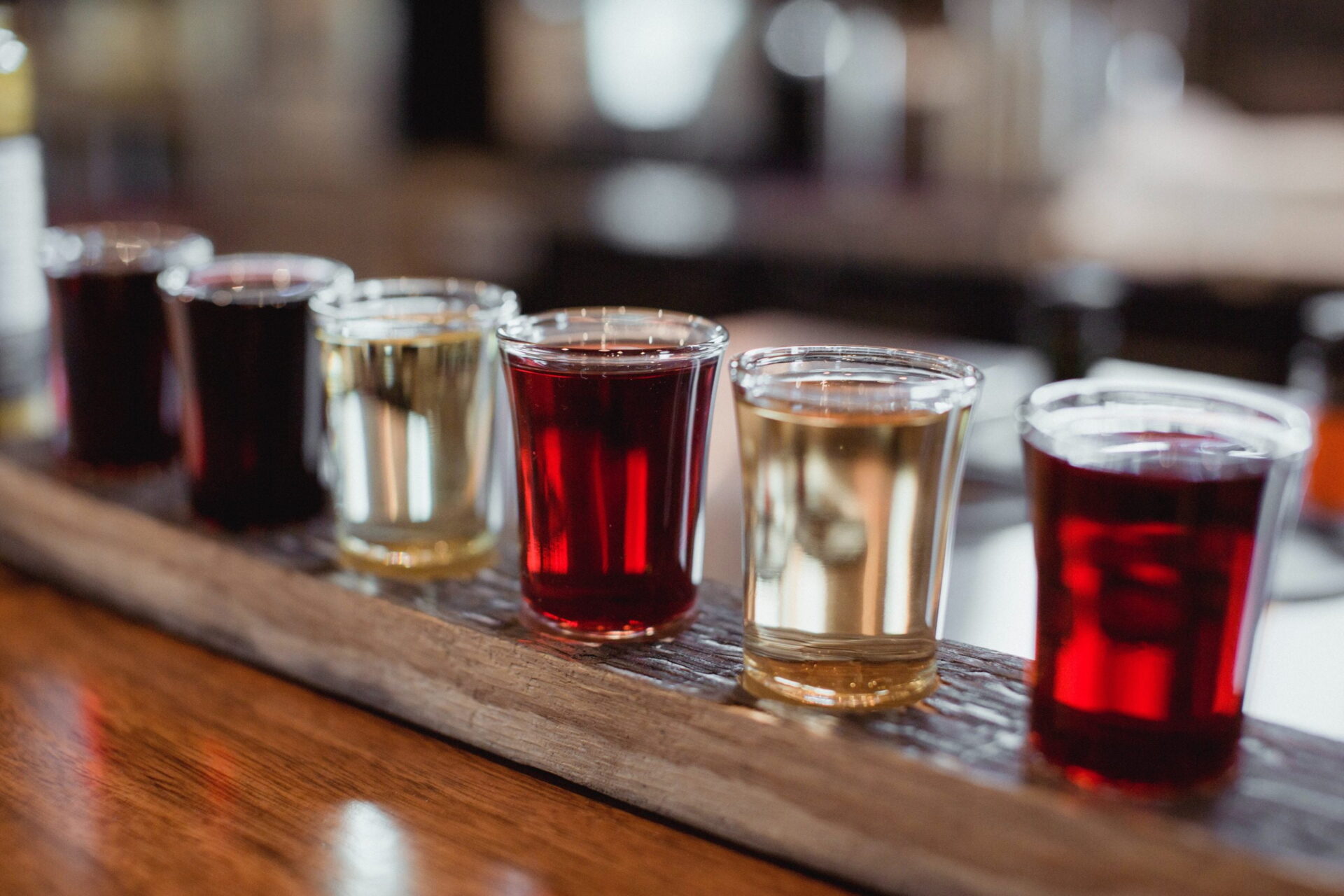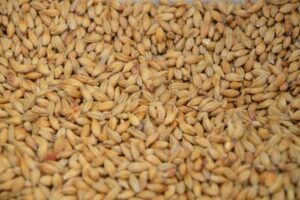In recent years, the demand for non-alcoholic beverages has soared, and the beer industry is no exception. As more and more people opt for a healthier lifestyle, non-alcoholic beers have become a popular choice for those who want to enjoy the taste of beer without the buzz. But have you ever wondered what goes into making a non-alcoholic beer? Brewing a non-alcoholic beer requires a high level of skill and expertise to get the perfect balance of flavor, aroma, and texture. In this deep dive, we’ll take a closer look at the craft of creating non-alcoholic beers, exploring the brewing process, ingredients, and methods used to create these delicious and refreshing beverages. Whether you’re a beer lover or just curious about the brewing process, this article will give you a comprehensive understanding of how non-alcoholic beers are made.

Top Non-Alcoholic Breweries
Let’s explore some of the major players in this burgeoning field:
Leading Brands:
- Guinness 0.0
Guinness 0.0 emulates the traditional dark and rich flavor of Guinness without the alcohol. It’s created using the same ingredients as the original, just without the alcohol. - Heineken 0.0 (Amsterdam, Netherlands)
The iconic Dutch brewer brings its expertise to the non-alcoholic scene with Heineken 0.0. This crisp and refreshing lager retains the familiar Heineken taste without the alcohol. - Erdinger Alkoholfrei (Erding, Germany)
Renowned for its wheat beers, Erdinger offers a flavorful non-alcoholic version of its signature Weissbier. The Alkoholfrei Weissbier is smooth, slightly sweet, and perfect for any occasion. - Beck’s Blue (Bremen, Germany)
Another major player, Beck’s Blue delivers a light and refreshing non-alcoholic lager with a subtle citrusy aroma. It’s a perfect choice for those seeking a classic beer experience without the buzz. - Clausthaler (Rheine, Germany)
A pioneer in the non-alcoholic brewing world, Clausthaler has been crafting quality beers since the 1970s. They adhere to the Reinheitsgebot, the German Purity Law, using only water, hops, barley, and yeast. Their Original Pils is a classic, while their Dry Hopped and Radler options offer refreshing twists.
Emerging Breweries:
- Athletic Brewing Company (Stratford, CT & San Diego, CA)
This brewery based in Connecticut is one of the most recognized in the NA space. They offer a wide selection of ale and lager style non-alcoholic craft beers. Their offerings include the Upside Dawn Golden Ale, Run Wild IPA, and Free Wave Hazy IPA. - Bravus Brewing Company:
Bravus produces a wide variety of non-alcoholic beers, claiming to use a proprietary brewing method to create beer styles that taste like their alcoholic counterparts. Offers an impressive range, including oatmeal stouts, IPAs, and amber ales, catering to diverse tastes. - Partake Brewing: Known for its ultra-low-calorie beers, Partake allows enthusiasts to enjoy the taste of beer without the alcohol or high calorie count. Despite being newer on the scene, Partake has garnered attention for its quality and taste, winning awards and recognition.
- Surreal Brewing Company – Located in California, Surreal Brewing focuses entirely on non-alcoholic beers. They use a proprietary brewing process involving fermentation and dealcoholization. Their Natural Bridges Kolsch and Juicy Mavs Hazy IPA are standouts.
- Brooklyn Brewery – The popular Brooklyn Brewery expanded into NA beer with the launch of Special Effects in 2018. It uses Maltosyl Transferase enzyme technology to remove alcohol while maintaining complexity.
- Hairless Dog Brewing – This UK brewery uses reverse osmosis to create non-alcoholic versions of traditional beer styles like pale ale and IPA. Their Black Ale and New England IPA are worth trying.
- Grüvi – Grüvi isn’t a brewery but produces great NA beer made from botanicals like hops, herbs, and fruits. Their IPA and Pale Ale use advanced Zielinski methods to achieve bold hoppy flavor without alcohol.
Advertisement
The brewing process for non-alcoholic beers
The brewing process for non-alcoholic beers is similar to that of traditional beers, but with a few key differences.
The first step is to create a wort, which is a sugary liquid made from malted grains. The wort is then boiled with hops to add flavor and aroma to the beer. After boiling, the mixture is cooled, and yeast is added to begin the fermentation process. This is where the most significant difference between alcoholic and non-alcoholic beers comes into play.
In traditional beer brewing, yeast consumes the sugars in the wort and produces alcohol as a byproduct. In non-alcoholic beer brewing, however, the fermentation process is stopped before the yeast can produce too much alcohol. This is achieved by heating the beer to a specific temperature, which kills off the yeast and stops fermentation. The result is a beer with little to no alcohol content, but with all the flavor and aroma of a traditional beer.
One of the challenges of brewing non-alcoholic beers is achieving the desired flavor profile without the masking effect of alcohol. Brewers need to be strategic in selecting the right ingredients and brewing techniques to ensure that the beer has the right balance of flavors and aromas. In the next section, we’ll take a closer look at the importance of ingredients in non-alcoholic beers.
The importance of ingredients in non-alcoholic beers
Just like traditional beers, the quality of ingredients used in non-alcoholic beers can make or break the final product. Malted grains, hops, and yeast all play a crucial role in the flavor and aroma of the beer. However, in non-alcoholic beers, the use of certain ingredients can be more challenging due to the lack of alcohol to balance out the flavors.
For example, hops, which are typically used to add bitterness and aroma to beer, can be overpowering in non-alcoholic beers. To counteract this, brewers may use different types of hops or adjust the amount used to achieve the desired flavor profile. Similarly, malted grains, which give beer its characteristic sweetness, can be more challenging to balance in non-alcoholic beers. Brewers may use different types of grains or adjust the brewing process to achieve the desired level of sweetness.
Water is also an essential ingredient in beer brewing, and the quality of water used can have a significant impact on the final product. Some brewers use water with a lower mineral content to create a smoother, less harsh beer, while others may use water with higher mineral content to achieve a more complex flavor profile. Ultimately, the ingredients used in non-alcoholic beers are just as important as those used in traditional beers, and brewers need to be strategic in selecting the right ingredients for the desired flavor profile.
Techniques for removing alcohol from beer
Removing alcohol from beer, also known as dealcoholization, involves extracting the alcohol without significantly altering the other desired qualities of the beverage. Several techniques achieve this, each with its own advantages and drawbacks. Here are some of the most common methods:
Thermal Extraction
- Steam Distillation: This traditional method heats the beer under pressure, causing the alcohol to evaporate at a lower temperature. While efficient, it can also remove volatile flavor compounds, impacting the taste.
- Vacuum Distillation: Similar to steam distillation, but it uses a vacuum chamber to further lower the alcohol’s boiling point, minimizing heat exposure and preserving flavor better.
- Spinning Cone Column: This advanced technology separates alcohol and volatile flavor compounds from the beer, then reintroduces the flavors after the alcohol is removed.
Membrane Filtration
- Reverse Osmosis: Uses high pressure to push the beer through a semipermeable membrane that allows water and alcohol to pass but retains larger molecules like sugars and flavor compounds. The alcohol-water mixture is then concentrated and the alcohol distilled. This method effectively removes alcohol while preserving flavor better than thermal methods.
Other Techniques
- Dialysis: Uses a semipermeable membrane to selectively remove alcohol from the beer by diffusion into an alcohol-absorbing solution. However, it’s slower and less efficient than other methods.
- Enzyme Modification: This experimental technique uses enzymes to directly convert ethanol into other non-alcoholic compounds within the beer itself. While promising, it’s still under development and not commercially available.
The best technique for removing alcohol from beer depends on factors like desired alcohol content, taste preservation, cost, and processing time. Brewers often combine different methods to achieve the optimal outcome.
It’s important to note that while dealcoholization can significantly reduce the alcohol content, it rarely eliminates it completely. Non-alcoholic beers typically have an alcohol content between 0.0% and 0.5% ABV.
The challenges of creating non-alcoholic beers
One of the challenges of creating non-alcoholic beers is achieving the desired flavor profile without the use of alcohol. Alcohol can have a masking effect on certain flavors, and without it, some flavors may be more pronounced or overpowering. Brewers need to be strategic in selecting the right ingredients and brewing techniques to ensure that the beer has the right balance of flavors and aromas.
Another challenge is achieving the right mouthfeel and texture. Beer with alcohol has a certain viscosity and texture that can be difficult to replicate in non-alcoholic beers. Brewers may use different brewing techniques or ingredients to achieve the desired mouthfeel and texture.
Finally, there is the challenge of achieving a long shelf life. Non-alcoholic beers are more susceptible to spoilage due to the lack of alcohol, which acts as a preservative. Brewers need to be careful in selecting the right packaging and storage conditions to ensure that the beer stays fresh for as long as possible.
Popular non-alcoholic beer styles
Non-alcoholic beers come in a variety of styles, from light lagers to bold IPAs. Some of the most popular styles include:
- Non-alcoholic lagers: These beers are typically light and refreshing, with a crisp, clean finish.
- Non-alcoholic wheat beers: These beers are made with wheat instead of barley and have a lighter, more citrusy flavor.
- Non-alcoholic IPAs: These beers are known for their bold, hoppy flavor and are a popular choice for beer enthusiasts.
- Non-alcoholic stouts and porters: These beers are darker and richer than other non-alcoholic beers, with flavors of chocolate and coffee.
The future of non-alcoholic beers
The future of non-alcoholic beers looks bright, with more and more breweries investing in the production of non-alcoholic beers. As consumers become more health-conscious, non-alcoholic beers are likely to become an increasingly popular choice. Additionally, advancements in brewing technology and techniques are making it easier for brewers to create high-quality non-alcoholic beers with complex flavor profiles.
Tasting and evaluating non-alcoholic beers
Tasting and evaluating non-alcoholic beers is similar to traditional beer tasting. When evaluating a non-alcoholic beer, it’s essential to consider the beer’s appearance, aroma, flavor, and mouthfeel. Non-alcoholic beers should have a balanced flavor profile, with no single flavor overpowering the others. Additionally, the beer should have a smooth, refreshing mouthfeel that’s easy to drink.
Non-alcoholic beer brands to try
There are several non-alcoholic beer brands worth trying, including:
- Heineken 0.0: This non-alcoholic lager has a crisp, refreshing flavor and is a popular choice for those looking for a non-alcoholic alternative to traditional lagers.
- Athletic Brewing Co.: This brewery specializes in non-alcoholic beers and offers a range of styles, from light lagers to bold IPAs.
- WellBeing Brewing Co.: This brewery offers a range of non-alcoholic beers, including wheat beers, stouts, and IPAs.
We have an in-depth guide on more brands.
Conclusion
Creating non-alcoholic beers is a complex and challenging process that requires a high level of skill and expertise. From selecting the right ingredients to removing alcohol from the beer, every step of the process requires careful consideration and planning. However, with advancements in brewing technology and techniques, non-alcoholic beers are becoming an increasingly popular choice for beer enthusiasts and health-conscious consumers alike. Whether you’re a beer lover or just curious about the brewing process, non-alcoholic beers offer a fascinating look into the world of beer brewing.



